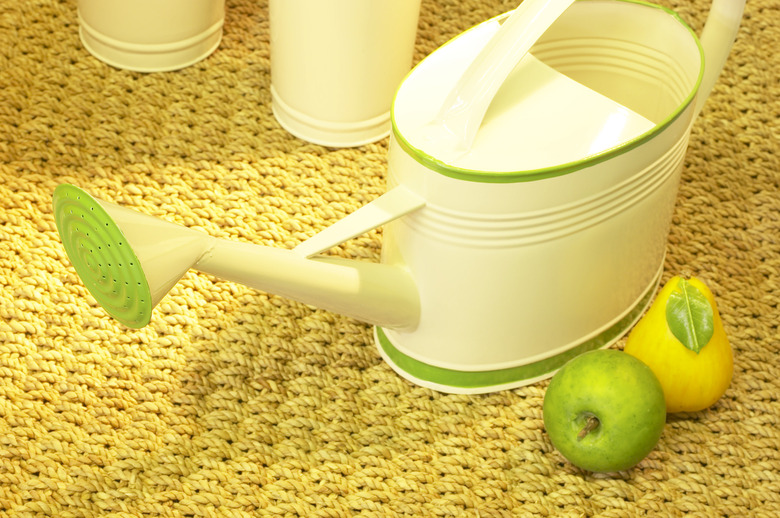Cast Iron Plant Fungus
Grown for its attractive foliage, cast iron plant (Aspidistra elatior) is native to China and grows in U.S. Department of Agriculture plant hardiness zones 8 through 10. This drought tolerant plant does well indoors because of its easygoing nature and few serious problems. It can develop leaf spotting and root rot diseases. The few fungal diseases that can attack cast iron plants are preventable with proper care and sanitation practices.
Leaf Spot Disease
Step 1
The leaf spot disease most likely to affect cast iron plants is caused by Fusarium fungi, notes University of Florida IFAS Extension. The disease typically produces small, water-soaked dots. As the disease progresses, the spots can enlarge and develop a yellowish halo and red or brown-colored center. Removing infected leaves and watering at the base of the plant — so the leaves stay dry — will help control this fungal disease.
- Grown for its attractive foliage, cast iron plant (Aspidistra elatior) is native to China and grows in U.S. Department of Agriculture plant hardiness zones 8 through 10.
- The leaf spot disease most likely to affect cast iron plants is caused by Fusarium fungi, notes University of Florida IFAS Extension.
Sclerotium Rolfsii Rot
Step 1
Sclerotium rolfsii is a fungal disease that typically produces brownish lesions on the infected plants' stem near the soil level. As the disease progresses, the leaves begin to yellow and die, and white mycelium form on the soil and infected plant tissue. Growing the cast iron plant in well-drained soil will keep this fungal disease at bay. Avoid over-watering the plant and instead keep the soil evenly moist. Ready-to-use liquid copper fungicide can help control leaf spot disease and typically requires repeat applications at seven- to 10-day intervals.
Fusarium Solani Rot
Step 1
This fungal disease will cause the leaves near the base of the petiole to rot and fall from the plant, and the roots begin to blacken. Controlling this rot requires improving the drainage by either moving outdoor cast iron plants to a spot with better drainage or replanting indoor plants in well-draining growing medium. Another option is to spray the cast iron plant with ready-to-use liquid copper fungicide once every seven to 10 days until the disease is no longer a problem.
- Sclerotium rolfsii is a fungal disease that typically produces brownish lesions on the infected plants' stem near the soil level.
- Ready-to-use liquid copper fungicide can help control leaf spot disease and typically requires repeat applications at seven- to 10-day intervals.
Consideration
Step 1
The best defense against fungal diseases is prevention, which can be accomplished with proper cultural care. Because fungal diseases generally occur when excessive moisture is present, take care not to over-water the cast iron plant. To determine if the cast iron plant needs watering, stick your index finger several inches into the soil. If the soil feels moist, the plant probably doesn't need watering. If the soil feels dry, water the plant as you normally would. Healthy plants are less likely to develop problems and — if a problem does arise — are more capable of surviving with little to no serious damage.
